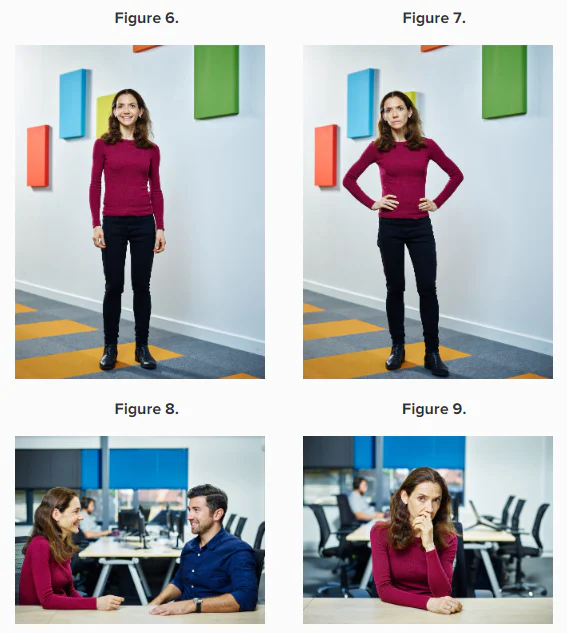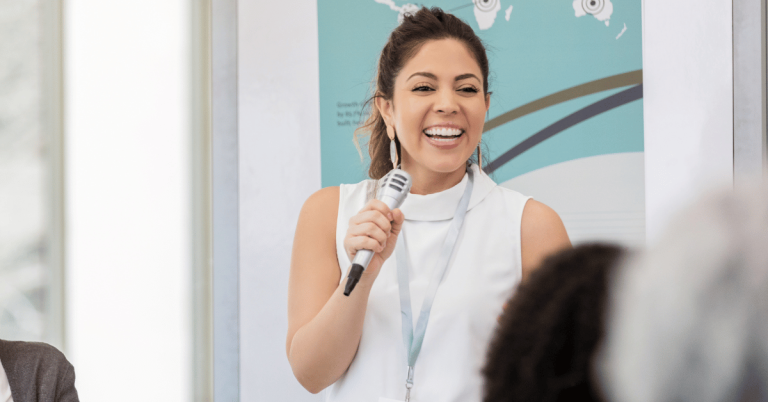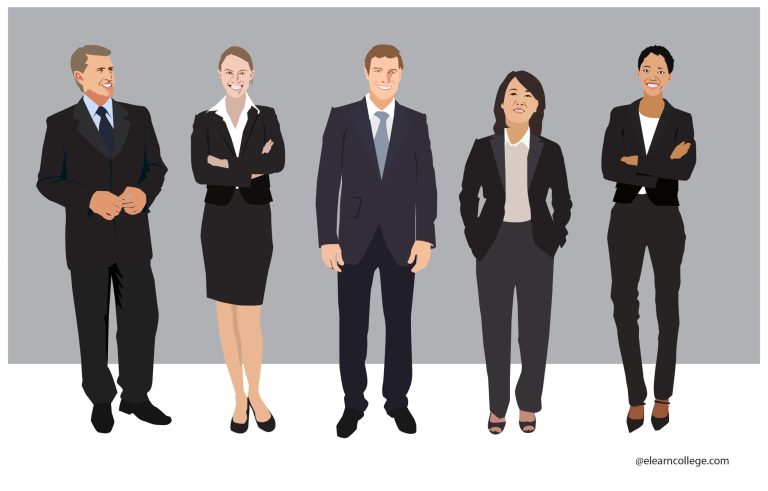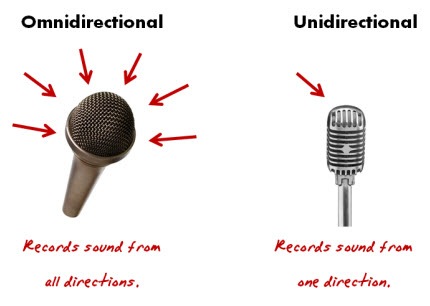Effective Body Language
Are you ready to discover the secrets of effective body language? It’s not magic, but it can definitely work wonders when it comes to communication. Picture this: you confidently walk into a room, shoulders back, head held high, and a warm smile on your face. Instantly, people are drawn to you. That’s the power of effective body language!
So, what exactly is body language, you might ask? Well, it’s the way we express ourselves through our gestures, facial expressions, and posture. It’s like a silent language that speaks volumes without the need for words. And when used effectively, it can help you make a great first impression, build strong relationships, and convey your thoughts and emotions clearly.
But here’s the thing – body language isn’t just about what you do; it’s also about how you do it. The key lies in understanding the cues and signals you’re sending out and learning how to align them with your intentions. By mastering the art of effective body language, you can become a skilled communicator, exuding confidence and charisma in every interaction. So, let’s get started on this exciting journey to unlock the secrets of effective body language!
– Maintain good posture and stand tall.
– Make eye contact to show interest and engagement.
– Use hand gestures and facial expressions to enhance your message.
– Pay attention to your tone of voice and use a confident and friendly tone.
– Practice active listening to show attentiveness.
By incorporating these techniques, you can convey your message effectively and positively impact your communication skills.
Unlocking the Power of Effective Body Language
Welcome to our guide on effective body language, where we explore the fascinating world of nonverbal communication. Our body language plays a crucial role in how others perceive us, how we connect with others, and how we present ourselves to the world. By harnessing the power of body language, we can enhance our communication skills, build stronger relationships, and achieve greater success in various aspects of life. In this article, we delve into the science behind effective body language and provide practical tips to help you master this important skill.
The Impact of Posture: Projecting Confidence and Presence
Posture is the foundation of effective body language. It not only affects how others perceive us but also how we feel about ourselves. Maintaining a good posture signals confidence, presence, and self-assuredness. When you stand or sit tall with your shoulders back, you exude an air of authority and openness. People are naturally drawn to individuals who have a commanding presence and radiate confidence. By paying attention to your posture, you can instantly elevate your body language and make a positive impact on those around you.
In addition to the external impression it creates, good posture also influences our internal state. Studies have shown that adopting a power pose, such as standing with your hands on your hips or spreading your arms wide, can increase testosterone levels and decrease cortisol levels, leading to greater feelings of confidence and reduced stress. So, the next time you want to boost your confidence before an important meeting or presentation, strike a powerful pose and observe the difference it makes in both your body language and mindset.
The Power of Eye Contact: Building Trust and Connection
Our eyes are windows to our thoughts, emotions, and intentions. Maintaining strong eye contact is essential for effective communication and building connections with others. When we look someone in the eye, we convey sincerity, attentiveness, and interest in what they have to say. It shows that we value and respect the person we are engaging with, creating a sense of trust and rapport.
However, it’s important to strike a balance with eye contact. Staring too intensely can come across as aggressive or confrontational, while avoiding eye contact can be perceived as disinterest or lack of confidence. The key is to maintain natural, comfortable eye contact, periodically looking away to avoid overwhelming the other person. By mastering the art of eye contact, you can enhance your communication skills, effectively convey your message, and strengthen your interpersonal relationships.
The Language of Gestures: Expressing Emotions and Engaging Others
Gestures are powerful tools for expressing emotions, enhancing communication, and engaging others. They can add emphasis to our words, clarify our intentions, and help us connect with others on a deeper level. Effective gestures are natural, purposeful, and aligned with the message we want to convey. They accompany our speech and provide visual cues that enrich our communication.
For instance, using open hand gestures when explaining a concept can signify transparency and trustworthiness, while crossing your arms may indicate defensiveness or disinterest. To engage others, it’s important to observe their body language cues and mirror them subtly. This builds rapport and generates a sense of connection, allowing for more meaningful interactions. By incorporating purposeful gestures into your communication, you can effectively express your thoughts and emotions, making your interactions more impactful and memorable.
The Role of Body Language in Professional Settings
In professional settings, effective body language is paramount to success. Whether you’re attending an interview, giving a presentation, or leading a team, your nonverbal cues can greatly impact how others perceive you and the outcomes you achieve.
Building Rapport through Active Listening
Active listening is a key component of effective communication in professional settings. It involves not only hearing the words being spoken but also understanding the underlying emotions and intentions. Active listening facilitates collaboration, fosters trust, and enhances problem-solving abilities.
When engaging in active listening, it’s important to demonstrate your attentiveness through your body language. Maintain eye contact, nod your head to show understanding, and provide verbal and nonverbal cues that you are fully present in the conversation. By practicing active listening and utilizing appropriate body language, you can establish rapport with colleagues, clients, and superiors, leading to more successful collaborations and professional growth.
Projecting Leadership and Authority
In leadership positions, effective body language is crucial for projecting confidence, authority, and presence. As a leader, others look to you for guidance and inspiration. Your body language sets the tone for the entire team and greatly influences their perceptions of you as a leader.
When presenting yourself as a leader, pay attention to your posture, maintaining an open stance and using expansive gestures. Make eye contact with your team members to establish connection and engage them in the conversation. Utilize confident body language cues such as standing tall, speaking with a clear and strong voice, and using purposeful hand gestures. By embodying leadership through your body language, you inspire your team, gain their respect, and create a positive and productive work environment.
The Influence of Effective Body Language in Personal Relationships
Effective body language is not only important in professional settings but also in personal relationships. Whether it’s with friends, family, or romantic partners, our nonverbal cues play a critical role in how we communicate and connect with others.
Fostering Trust and Intimacy
In personal relationships, trust and intimacy are key factors in building strong connections. Our body language can either nurture or undermine these elements. By being open and receptive in our nonverbal cues, we create a safe space for others to express themselves and share their thoughts and emotions.
One important aspect of building trust and intimacy is active listening. By engaging in active listening and displaying genuine interest through our body language, we signal to our loved ones that we value their experiences and emotions. Maintaining eye contact, adopting an open posture, and providing affirming nonverbal cues such as nods, smiles, and touches can deepen the bond between individuals and create a sense of emotional closeness.
Resolving Conflict and Building Bridges
In personal relationships, conflicts are inevitable. Effective body language can help in resolving conflicts and fostering reconciliation. When faced with a disagreement, it’s crucial to remain calm and composed, even if emotions are running high.
During conflict resolution, pay attention to your body language to create a non-threatening environment. Maintain an open posture, avoid crossing your arms or showing defensive gestures, and listen actively to the other person’s perspective. Respond with empathy and use nonverbal cues to convey understanding and a willingness to find a resolution. By utilizing effective body language during conflict resolution, you can bridge the gap between individuals, rebuild trust, and strengthen your personal relationships.
Mastering Effective Body Language: Tips and Techniques
Now that we have explored the importance of effective body language in various aspects of life, let’s dive into some practical tips and techniques to help you master this valuable skill:
1. Observe and mimic body language cues of confident individuals:
Observing the body language of confident individuals around you can provide valuable insights into effective nonverbal communication. Notice how they carry themselves, their eye contact, and their use of gestures. Practice mirroring these cues to develop your own confident body language.
2. Practice power poses:
Before important events or situations, such as interviews or presentations, practice power poses to boost your confidence. Stand tall, with your chest out and your hands on your hips, or spread your arms wide, and hold these poses for a few minutes. This simple exercise can help you exude confidence and reduce stress.
3. Focus on your posture:
Be mindful of your posture throughout the day. Stand and sit straight, keeping your shoulders back and your head held high. Practicing good posture not only enhances your body language but also improves your overall well-being.
4. Maintain eye contact:
When engaging in conversations, maintain natural and comfortable eye contact. Look directly into the other person’s eyes, but remember to periodically glance away to avoid staring. This demonstrates attentiveness and understanding.
5. Use purposeful gestures:
Experiment with purposeful gestures that align with your message. Practice using open hand gestures and avoid crossing your arms, as this can create a barrier between you and others. Be mindful of cultural differences and adjust your gestures accordingly.
6. Be aware of personal space:
Respect personal space boundaries when interacting with others. Stand or sit at an appropriate distance to avoid invading their personal space. Being mindful of personal space demonstrates respect and consideration.
7. Practice active listening:
Engage in active listening by giving your full attention to the person speaking. Nod your head, make affirming vocal cues, and provide appropriate responses to show that you are actively engaged in the conversation. This not only improves your body language but also strengthens your communication skills.
8. Seek feedback from trusted individuals:
Solicit feedback from trusted friends, family members, or colleagues regarding your body language. Their observations can provide valuable insights and help you identify areas for improvement.
9. Record and review yourself:
Record yourself during presentations, meetings, or other situations where effective body language is important. Review the recordings to identify areas where you can enhance your nonverbal communication skills.
10. Practice in front of a mirror:
Stand in front of a mirror and practice your body language. Observe your posture, eye contact, and gestures. Experiment with different cues and refine your nonverbal communication skills.
Remember, mastering effective body language is an ongoing process. By incorporating these tips into your daily life and practicing consistently, you can elevate your communication skills, build stronger relationships, and achieve greater success in all areas of your life.
Now it’s time to unlock the power of your nonverbal communication and embrace the impact of effective body language!
Key Takeaways: Effective Body Language
– Maintaining eye contact shows interest and attentiveness in conversations.
– Gestures can enhance your communication and help convey your message effectively.
– Smiling and nodding can create a positive and friendly atmosphere.
– Mirroring the body language of others can establish rapport and build connections.
Frequently Asked Questions
Welcome to our FAQ section on effective body language! Here, you’ll find answers to common questions related to nonverbal communication and how to improve your body language to make a positive impact. Read on to discover the secrets of effective body language!
1. Why is body language important in communication?
Body language plays a crucial role in communication as it can often convey messages more powerfully than words alone. Our facial expressions, gestures, and posture can all convey emotions, thoughts, and intentions. When our body language aligns with our spoken words, it enhances the clarity and authenticity of our message. Similarly, when we interpret the body language of others accurately, it helps us understand the underlying meaning of their words.
Additionally, body language can influence how others perceive us. By consciously using open and confident body language, we can project self-assurance and credibility. Overall, understanding and using effective body language can greatly improve our communication skills and help us build stronger connections with others.
2. How can I improve my body language?
To improve your body language, start by increasing your self-awareness. Pay attention to your own nonverbal cues and observe how others respond to them. Take note of any negative habits or self-defeating gestures, such as slouching or avoiding eye contact, and make a conscious effort to correct them.
Practice positive body language by maintaining good posture, standing or sitting upright, and making eye contact with others. Smile genuinely and use open and relaxed gestures. It’s also important to listen actively and show interest in the other person by nodding, using appropriate facial expressions, and mirroring their nonverbal cues.
3. Can body language affect my confidence?
Definitely! Body language and confidence are closely linked. When you adopt confident body language, such as standing tall, keeping your shoulders back, and maintaining an open posture, it can actually boost your confidence levels. Research shows that simply adopting a power pose for a few minutes can increase your sense of power and decrease feelings of stress.
Conversely, if you display closed-off or insecure body language, like crossing your arms, slumping your shoulders, or avoiding eye contact, it can make you feel less confident and impact how others perceive you. So, by intentionally using positive and confident body language, you can not only enhance your self-assurance but also influence how others perceive and respond to you.
4. How can body language improve my interpersonal relationships?
Effective body language plays a vital role in building and maintaining positive interpersonal relationships. When you display open and welcoming body language, such as a genuine smile, uncrossed arms, and facing the other person directly, it signals that you are approachable and interested in connecting with them.
Furthermore, body language can help convey empathy and understanding. By using active listening cues, such as nodding, maintaining eye contact, and mirroring the other person’s gestures, you show that you are fully present and engaged in the conversation. This fosters trust and strengthens the bond between you and the other person.
5. Can body language impact job interviews or professional interactions?
Absolutely! In job interviews and professional interactions, body language can significantly impact how you are perceived by potential employers, colleagues, or clients. Positive body language can demonstrate professionalism, confidence, and trustworthiness, giving you an edge over other candidates or competitors.
For job interviews, practice good posture, make eye contact, and use confident and calm gestures. Avoid fidgeting or crossing your arms, as these can display nervousness or defensiveness. By consciously using open and positive body language, you can create a favorable impression and leave a lasting impact on the interviewers.
Body Language Expert Explains How to Show Confidence | WIRED
Summary
Okay, so let me break it down for you. Body language is super important! It helps us communicate without words. By making eye contact, smiling, and standing up straight, we can show confidence and make a good impression. But be careful, crossed arms and avoiding eye contact can send the wrong message. So remember, use your body language wisely and you’ll be able to say a lot without even saying a word!
To sum it up, just remember this: body language is like a secret language we all speak. It can help us make friends, show respect, and feel more confident. So don’t forget to use your body language powers for good!



